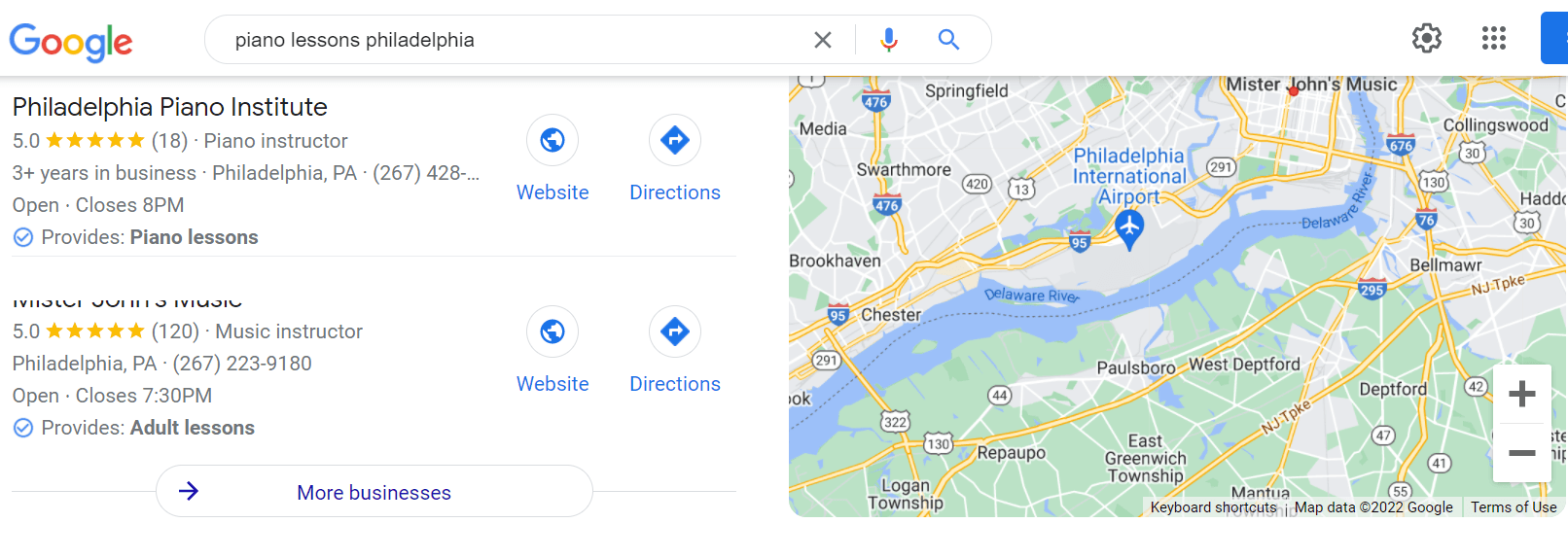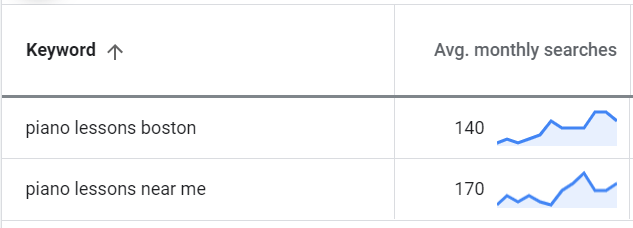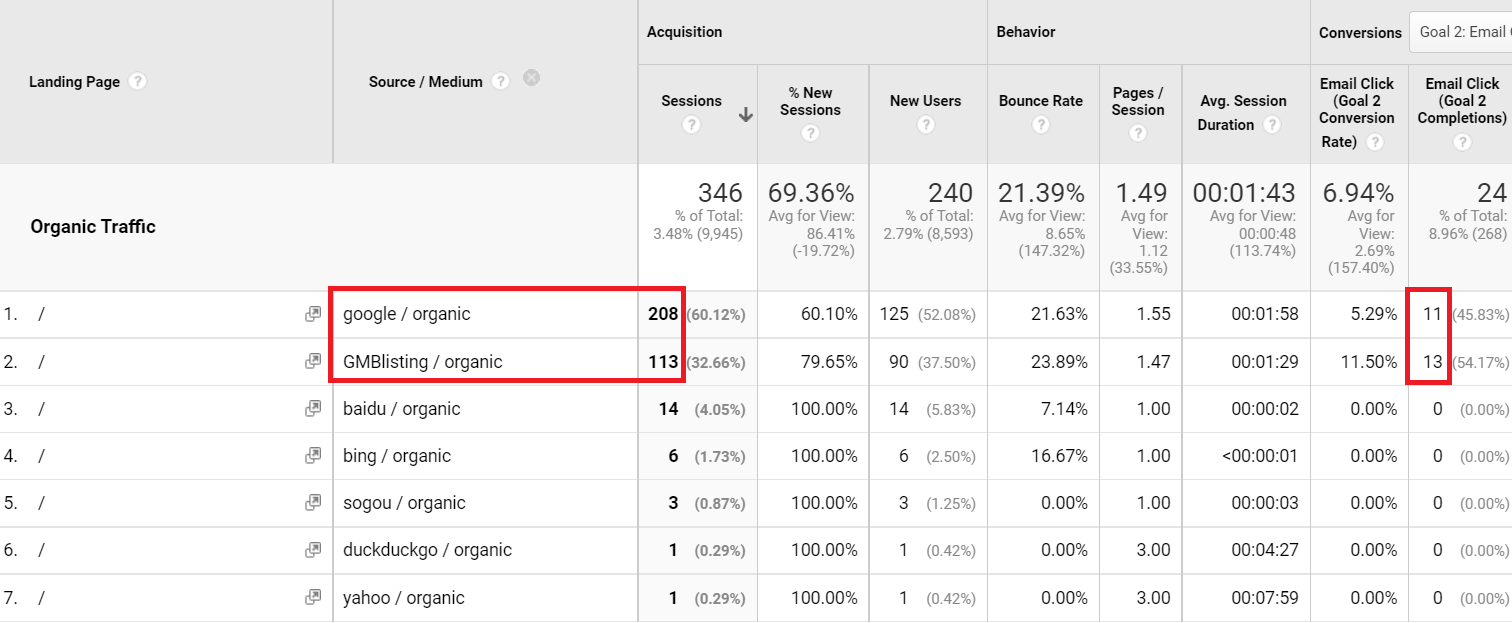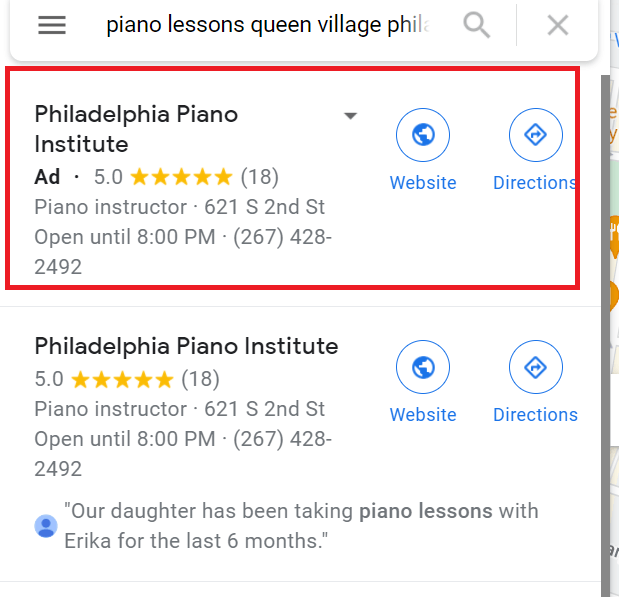How Music Teachers Can Use Google My Business To Get Students
About the Author
Adam Gingery is the co-founder of the Philadelphia Piano Institute, owner of MusicStudioMarketing.com, and a partner at Majux, a Philly-based agency. He studied piano pedagogy and euphonium for his BMus and MMus degrees, and he has been featured by Forbes, HowStuffWorks, the Philadelphia Chamber Music Society, and more.
If you run a music school or a private studio (or would like to), you probably need more student leads. Traditional SEO is hyper-competitive, Google Ads is expensive, Bark.com barely works, Thumbtack is low quality, and spamming local Facebook groups is not a long term strategy. So where should you start?
The answer is Google My Business. Firstly, it’s free and easy to set up. Second, your rankings on Google Maps are partially proximity-based, so just being near a prospect can help you get business. And third, the quality of your Google My Business leads will be high.
This blog will discuss the value associated with Google My Business, the process of setting up a listing, and how to get it ranking higher.
What Is Google My Business?
Google My Business (GMB) is Google’s free profile available to businesses who wish to appear in the map section of Google search. You can build an account in about 15 minutes, and once your location is verified, your business will be eligible to show in the map pack when people search for your services.
An example:
You can add a description, images, posts, contact information and more, and your clients can leave reviews of your business.
Why Do Music Teachers Need Google My Business Listings?
Music teachers have so much to gain from GMB, and that’s because people searching for local services often add the words “near me” to their search queries. Web users Googling with “near me” modifiers are extremely likely to sift through the map results before scrolling further on the page. Also, the map results precede the traditional list of websites in Google’s search results.
The Sheer Volume of “Near Me” Search Queries
To demonstrate, I plugged two search queries into Google’s Keyword Planner tool and set the geographic targeting for Boston. The results:
According to Google, more people search for “piano lessons near me” in Boston than search for the city name.
Google My Business Can Be a Significant Source of Leads
At the Philadelphia Piano Institute, we receive a decent volume of leads just from GMB alone. Here’s a screenshot from January 2022 of our Google Analytics account showing:
- Purely organic visitors to our site’s homepage
- Which organic channel they came from (Google, Google My Business, Bing, Etc.)
- How many form submissions we received (right-most column)
In sum, the Institute’s homepage received 346 organic sessions in January 2021, with 208 coming from the regular search engine results and 113 coming from Google My Business (the map pack). But GMB accounted for more leads!
Visitors From Google My Business Have a High Degree of Intent
Web users Googling phrases with “near me” language are likely to do two things:
- View the search results in the Google Map Pack
- Prioritize proximity
In fact, Google’s algorithm actually takes proximity into account when deciding who ranks higher in the Google Map Pack. So if you are closer to the potential lead, you have a higher likelihood of outranking your competitors in the map pack.
That means that when someone finds you in the Google Map Pack, they are likely to contact you and become a client. They are nearby, looking for your services, and would be considered a “warm” lead. So even with fewer website visitors from GMB, you can count on a higher conversion rate.
Note: Don’t Overlook Bing and Apple Maps
Would you believe that the first student who found the Philadelphia Piano Institute organically on the internet came from Apple Maps? I specifically tracked this in Google Analytics.
As you can see from the screenshot above, traffic from non-Google search engines is rare. But the traffic you do get could turn into new students.
How To Get Music Students With Google My Business
Set Up Your Listing
First, create a Gmail address, if you haven’t already. Then visit business.google.com.
You will enter your business’s name (the actual name shown in legal documents and/or your website, not something written only for GMB), then follow the prompts to get your account off the ground – you’ll need to include your address or service radius, business category (like “music lessons” or “piano lessons”), images, and more. This is a straightforward process that Google will walk you through.
Verify Your Address
The catch is that after you enter your address, Google needs to verify that address by mailing a postcard to you. It will take a few days to receive the postcard, and once you do, you will follow the instructions on the card to verify your address.
If the postcard never arrives (which sometimes happens!), you will need to send an email to GMB support explaining the situation. At that point, a Google representative may ask that you hold a brief Google Hangouts video call to show them the business location in lieu of a postcard. Fortunately, this is rare.
“Optimize” Your GMB Listing
You will enter your basic business information as prompted by Google during the initial account setup, but there’s more you can do to attract leads. Here’s a list:
- Add as many high quality photos as you can – people look at these to decide if they like your studio or not
- Add posts – these let you highlight special offers, events, products, or updates in your GMB profile
- Take time to write a meaningful business description
- Add as many relevant services as possible. For instance, manually type in “piano lessons,” “piano classes,” “piano teacher” in your business information, because Google highlights keywords that match a user query. Here’s where to make those edits:

- Source reviews from students, peers, friends – anyone you can get
How To Make Your GMB Listing Rank Higher
Creating an optimized GMB listing is important, but that’s only the foundation. Now it’s time to build on that and compete with other teachers for the top three spots in your local map pack.
Aside from correctly setting up and optimize your listing, you will need two things:
- Reviews
- Local citations
What Are Local Citations?
“Citations” are instances of your business name, address, and phone number (NAP) across the internet. Google looks for these citations, and the more you have, the higher you may rank in local search – but that NAP information must exactly match the information in your GMB profile. I wrote fairly in depth about this exact thing in my guide about how to get more piano students, but here is a basic strategy:
Use the Google search +[city name] +free +business +directory and compile the websites you find into a spreadsheet. Then visit each website on the list, set up an account, build a profile if possible, and accurately list your business information along with a unique description and link to your website. This will help you rank better in the map pack over time.
Here are a few examples of good directories your can start with:
- Nextdoor.com
- Alignable.com
- Showmelocal.com
- Hotfrog.com
Do Reviews Matter For Local Search Rankings?
Yes, a high volume of reviews will help you rank higher in the map pack. Google views review-laden profiles as more authoritative than others, and you will earn more visibility as a result. Furthermore, you can benefit from having keywords in your reviews. For instance, if you have a number of reviews with the words “violin lessons” in them, and you teach violin lessons, that review text will be shown in bold on Google.
The recency of your reviews, owner responses, and your overall high star count will also help you rank higher on Google.
How Many Students Can You Expect From Google My Business?
The Philadelphia Piano Institute receives 15-30 leads per month from Google My Business. The number of students we convert from those leads depends on how much studio availability we have at the time, plus a few other factors. Take into account:
- Our studio is in the heart of a densely populated urban neighborhood
- We rank #1 or #2 for most piano related terms in our area
- There’s also lots of competition!
For contrast, I consult with a music teacher in a town of fewer than 35,000 people, and she receives 8-12 leads from Google My Business on a good month. She also ranks in the top 3 positions for relevant piano lesson queries.
In short, the number of students you get from Google My Business will depend on your proximity to a qualified population base, the amount of other piano businesses nearby, the attractiveness of your Google My Business listing, and your ranking.
An Added Benefit: Connect Your Google Ads Account
At some point, you may decide to run a Google Ads campaign for your music school. If you already have a GMB profile in place, you can connect your Google My Business listing to your ads account. This will allow you to show ads directly in the map pack, like this:
If you do this, make sure you only run your ads within a reasonable driving or walking distance of your studio (you don’t want to pay for unqualified clicks) – but it’s a very powerful tool.
Free Leads Are Waiting – Get Started
Every lead you receive from GMB will be free. Your Google My Business profile will perform best within the context of a full SEO project, but there is no reason not to create a well-optimized GMB listing, build some citations, and start growing your studio. The sooner your listing is live, the sooner you can start adding professional photos, sourcing reviews, and earning more revenue.
